Five Tips to Prevent Frozen Pipes
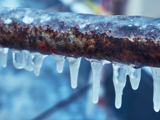
Frozen pipes can be a major problem for homeowners and businesses during the winter months. When the temperature drops below freezing, water in pipes can freeze, causing them to expand and potentially burst. Not only is this a costly repair, it can also lead to water damage and flooding in your home or business premises. In this article, we'll discuss the causes of frozen pipes, the problems that can arise, and solutions for preventing and thawing them, specifically focusing on the use of pipe temperature sensors and monitors.
One of the main causes of frozen pipes is poor insulation. Pipes that are located in unheated areas, such as attics, garages, warehouses and crawl spaces, are more susceptible to freezing. Cold drafts can also cause pipes to freeze, so it's important to seal any gaps or cracks in your building's exterior to keep the cold air out.
Another cause of frozen pipes is a lack of proper drainage. If water is allowed to collect around pipes, it can freeze and cause the pipes to burst. This is why it's important to properly maintain your gutters and down pipes, and make sure that any excess water is directed away from your building.
When pipes freeze, the water inside them expands, which can cause the pipe to crack or burst. This can lead to significant water damage and flooding. Additionally, if a pipe bursts and goes unnoticed for an extended period of time, it can continue to leak, causing further damage including damp, rot, and potentially leading to mould growth.
To prevent frozen pipes, there are several steps you can take. Here are our five top tips…
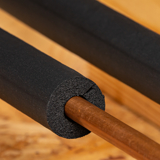
One
Insulate your pipes. This is one of the most effective ways to keep them from freezing and can be easily done by wrapping them in insulation sleeves.
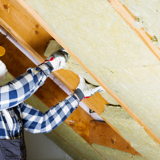
Two
Ensure that you retain as much heat as possible in areas that are typically unheated. Add insulation to attics and crawl spaces. Keep garage or warehouse doors closed when the outside temperature is low.
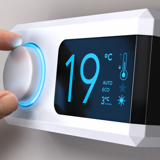
Three
Keep your building at a consistent temperature, ideally above 12°C, even when you're away. This will help prevent the temperature in your building from dropping too low, which can cause pipes to freeze.
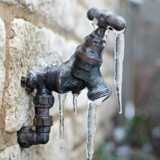
Four
Close indoor valves supplying outside faucets and keep the outside faucet open to allow water to drain and for expansion in the event of the pipe freezing.
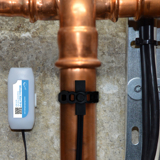
Five
Use a frozen pipe sensor or monitor. These sensors or monitors can be placed on or near to pipes that are susceptible to becoming frozen and can alert you if the temperature drops below a certain threshold. This allows you to take action before the pipes freeze, such as adjusting the temperature in your building or turning on a space heater. Additionally, there are leak detection systems that can notify you if a pipe burst occurs causing local flooding. There are a variety of automated monitoring solutions available that can help you prevent frozen pipes and minimize the damage if they do occur.
If you suspect that your pipes may be frozen, there are several things you can do to thaw them. One of the most effective methods is to use a hair dryer or heating pad to gently heat the pipe. You can also use a portable heater to warm the area around the pipe. However, it's important to be careful when using a portable heater in an enclosed area that may contain flammable materials.
Another solution is to open the faucet that the frozen pipe is connected to, so that when the pipe begins to thaw, the water can start to flow through, accelerating the thawing process. If frozen pipes are situated in enclosed spaces, such as under sink cabinets, it can be helpful to open the cabinet doors to allow warmer air to circulate around the pipes.
It's important to call a plumber if you suspect that a pipe has burst. They will be able to locate the leak and repair it, as well as prevent any further damage to your home or business premises.
In conclusion, frozen pipes can be a major problem for homeowners and businesses during the winter months. Insulating pipes, keeping the temperature consistent, and proper drainage are all ways to prevent frozen pipes. But with the use of a frozen pipe sensor or monitor, you can detect and prevent this issue before it becomes a costly repair. These sensors and monitors can alert you to a drop in temperature, allowing you to take action before the pipes freeze, and giving you time to minimize the damage if they do occur.
If you need a product to monitor pipe temperature or detect localised flooding if it occurs, take a look at the products linked below.
If you need any other help or advice, you can contact the FilesThruTheAir team here.

